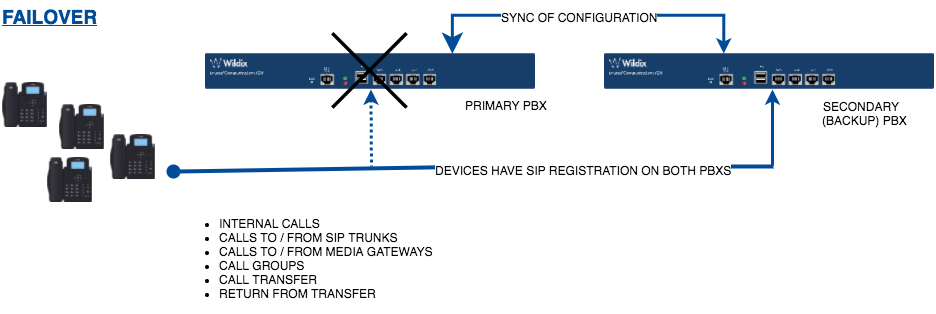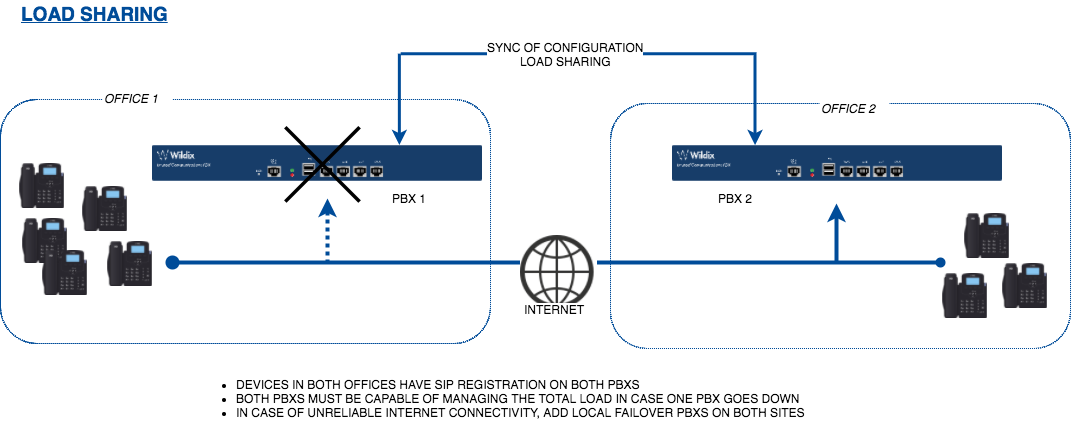 Depending on how critical the UC service is for the organization, it might be necessary to put service continuity scenarios in place, including:
Depending on how critical the UC service is for the organization, it might be necessary to put service continuity scenarios in place, including:
- Failover: a secondary server is used in case the primary server fails.
- Load Sharing: both systems work at the same time, but if one goes down, the other can manage the whole load.
Let’s start analyzing the simplest scenario: one UC Server and X users / devices connected to it. Failover is perfectly fine in this first scenario.
 Now let’s assume that the organization has two or more locations with local UC servers and lines.
Now let’s assume that the organization has two or more locations with local UC servers and lines.
In this case, load sharing is, of course, a better solution as each local system can take care of its own load, but if one should go down, a remote one can recover the situation. If we are afraid that the Internet might not be reliable in the moment of need, then such locations should provide local redundancy via failover.
 If we are using a hybrid cloud solution, then this role of failover PBX scenario can be managed by the cloud system. The cloud system will manage all mobile users and small offices, while large offices will be serviced by a local PBX. If the local PBX should go down (for example, during an upgrade or maintenance), the remote PBX can take over.
If we are using a hybrid cloud solution, then this role of failover PBX scenario can be managed by the cloud system. The cloud system will manage all mobile users and small offices, while large offices will be serviced by a local PBX. If the local PBX should go down (for example, during an upgrade or maintenance), the remote PBX can take over.
 The last scenario involves a cloud system spanning different continents. In such a case, each major area should be serviced by a cloud UC system that is as close as possible to the users. Also, if one of the nodes is unreachable, remote nodes can take over. Thanks to direct media features, the audio will always have small latency.
The last scenario involves a cloud system spanning different continents. In such a case, each major area should be serviced by a cloud UC system that is as close as possible to the users. Also, if one of the nodes is unreachable, remote nodes can take over. Thanks to direct media features, the audio will always have small latency.
